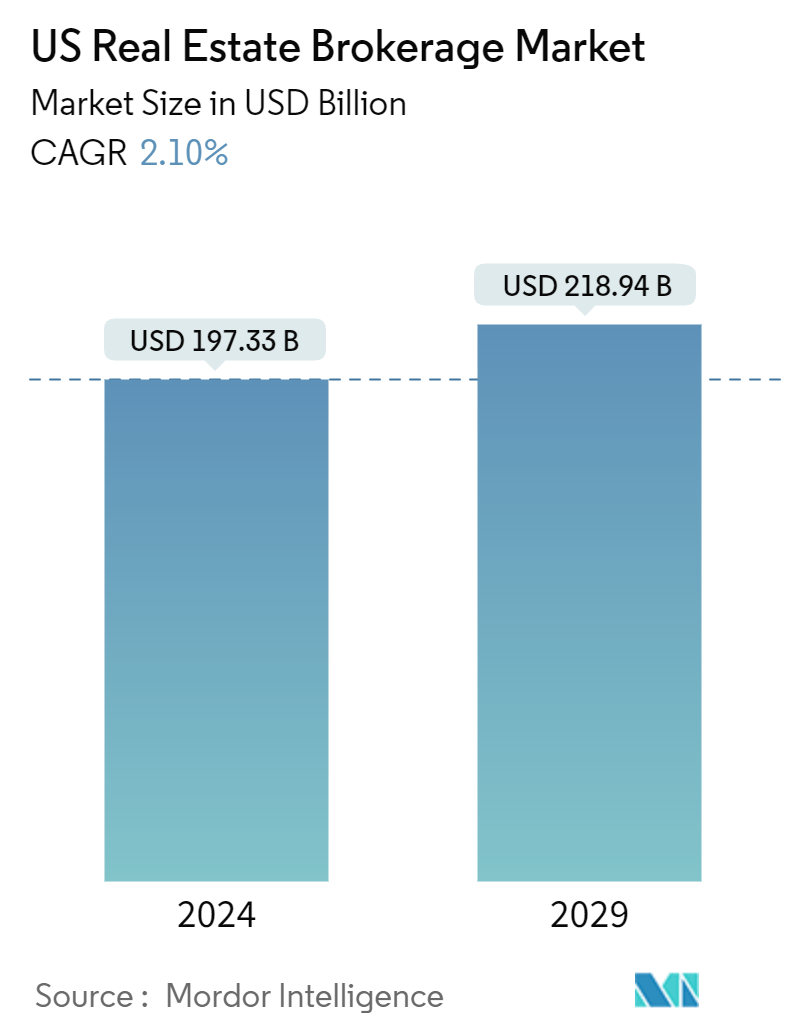Market Size of United States Real Estate Brokerage Industry

| Study Period | 2020 - 2029 |
| Base Year For Estimation | 2023 |
| Market Size (2024) | USD 197.33 Billion |
| Market Size (2029) | USD 218.94 Billion |
| CAGR (2024 - 2029) | 2.10 % |
| Market Concentration | High |
Major Players
*Disclaimer: Major Players sorted in no particular order |
United States Real Estate Brokerage Market Analysis
The US Real Estate Brokerage Market size is estimated at USD 197.33 billion in 2024, and is expected to reach USD 218.94 billion by 2029, growing at a CAGR of 2.10% during the forecast period (2024-2029).
- The US real estate brokerage market is mainly driven by the country's economic conditions and advancements in technology.
- Despite high mortgage rates, soaring home prices, and sluggish sales, experts are optimistic about the housing market's future. However, several persistent challenges are impeding the much-anticipated turnaround for eager buyers.
- One major hurdle is inflation, which is proving slow to abate. This delay is further exacerbated by the Federal Reserve's cautious stance on cutting the federal funds rate. Given that mortgage rates are closely tied to this benchmark rate, the recent surge in the federal funds rate, now at its highest in over two decades, is directly impacting mortgage rates, making homeownership less affordable for borrowers.
- While mortgage rates rise, US home prices show resilience. The S&P CoreLogic Case-Shiller Home Price Index reported a 6.3% annual gain in April, slightly down from March's 6.5% but still setting a new record. While many experts believe a Fed rate cut could reinvigorate the housing sector, the timing and likelihood of such a cut in 2024 remain uncertain.
- Despite their allure, new homes are feeling the pinch of soaring mortgage rates. In May, as mortgage rates touched or exceeded 7%, sales of newly built single-family homes in the United States took a hit. Data from the US Census Bureau and HUD reveals a sharp 11.7% drop from April and a significant 16.5% decline from 2022.
- On a positive note for buyers, the sluggish sales have pushed new home inventories to levels not witnessed since early 2008. Buyers still in the market are gaining more negotiating power. Sellers of existing homes are increasingly offering concessions, such as covering closing costs and contributing towards repairs.
- Furthermore, those eyeing new constructions will be pleased to know that the median price for a new home in May dropped by USD 500 to USD 417,400, nearly USD 2,000 below the median price of an existing home.

